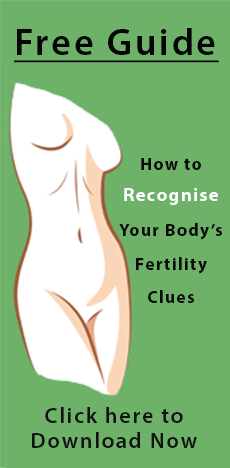Nasty vaginal yeast infections, most commonly from an overgrowth of the Candida albicans organism, can impact the lives of women at any time of the month.
The symptoms include an embarrassing itch ranging from a minor discomfort to a drive-you-crazy uncomfortable itching and burning sensation, along with a telltale white discharge. While any woman can get a vaginal infection of this variety, some women are more prone to yeast infections immediately before their monthly periods. Why?
Normal Vaginal Flora
The healthy vagina hosts a well-balanced flora of good bacteria and yeast, including Candida. Keeping yeast in check and maintaining that delicate balance is important to avoid a Candida overgrowth.
A recent intake of broad-spectrum antibiotics can wipe out all the good bacteria, allowing the yeast to flourish and causing a lot of irritation.
Women who take oral contraceptives may be more susceptible to Candida infections due to the hormonal changes that affect the pH of the vagina.
Diabetics who do not have their glucose levels under control are naturally more prone to yeast infections because of the high levels of sugar circulating in their bodies, which generally feed the yeast and allow it to multiply.
Even if you haven’t taken a recent antibiotic and do not have diabetes, you may see a trend of surging yeast infections before you menstruate each month.
Changes in Vaginal pH
In the premenstrual stage, oestrogen levels dip, causing a change in the pH of the vagina and knocking down some of the good beneficial acidophilus bacteria. Fortunately, estrogen levels resort to normal values right after your period, which may cause the yeast symptoms to retreat – until the next month when the cycle begins once again. If you notice a pattern with these hormonal yeast infections, a little bit of preventative work may help you to maintain a healthy vaginal pH.
Nutritional Approaches prior to Menstruation
It’s a good idea to ramp up your probiotic supplements as well as consume yogurt with live acidophilus or unsweetened kefir about a week before your next scheduled period. Acidophilus creates an acidic environment where yeast can’t thrive as well.
Do your best to avoid sugar and reduce your carbohydrate intake in the pre-menstrual state to prevent the yeast from multiplying. This can be challenging, though, since the yeast may encourage major cravings for sweets at this particular time. Some women are even sensitive to lactose (milk sugar) in dairy products, and these, too, may contribute to developing yeast.
Lifestyle Measures
Some lifestyle preventatives for vaginal yeast infections include wearing moisture-wicking underwear and looser fitting apparel, especially before menstruation. Tight synthetic clothing holds moisture and creates the perfect environment for Candida to grow. Since the vaginal pH is already off, you’ll want to try to avoid creating a breeding ground for yeast. Avoid wearing a wet bathing suit after a swim and steer clear of public hot tubs. Try soaking in a Epsom salt bath instead of using deodorant, harsh soaps or bubble bath.
Avoid douching, which may irritate the vaginal area as it washes out beneficial bacteria. Keep an over-the-counter (or prescription) anti-fungal cream on hand and apply before each menstrual period to cut down on the volume of yeast – this goes along with the adage, ‘The best defence is a good offense!’
Change in Sanitary Products
If you’ve switched to cotton underwear but use panty liners or sanitary pads before your period, the synthetic sanitary products may cause a slight vulvar irritation since they do not allow for a normal circulation of air. Irritated skin may be a ripe ground for yeast to take hold. Scented or deodorized sanitary pads and tampons can also irritate the sensitive vaginal tissue. Try unscented cotton tampons and avoid sanitary pads with unnecessary chemicals.
Check with Your Physician
When over-the-counter, lifestyle, and nutritional changes don’t cut down on the amount of Candida infections, it’s best to check with your physician to see if it’s time for the heavy artillery: prescriptions for a stronger anti-fungal cream or an oral antifungal medication. Some Candida vaginal infections may have similar symptoms to other non-yeast vaginal infections (such as Bacterial Vaginosis or Trichomonas). Your gynaecologist may take a sample of your vaginal discharge to examine under a microscope or to culture to identify the culprit.
Frequent yeast infections may indicate a more serious underlying issue such as diabetes or a malfunctioning immune system that allows the Candida to go awry, creating a systemic infection with other symptoms and complications.
Stress can be detrimental to your immune response and can interfere with proper sleep and nourishment – a perfect setting for Candida to flourish.
Your physician can best determine how serious your recurring Candida infections are. With proper preventative methods, nutrition and lifestyle modifications, acute Candida infections can be easily controlled with a return to being symptom free before that time of the month!
About the Author: Dr. Eric Bakker, ND has dedicated the past 20 years of his career to the treatment of Candida infections, both acute and systemic, in men, women, and children of all ages. You can find more information about his studies at www.yeastinfection.org.

